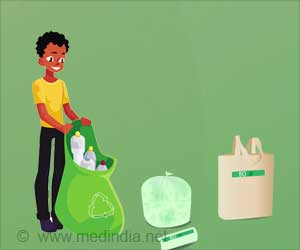Is it safe to use plastic tea bags? No, plastic teabags may release tiny microscopic particles into your soothing cup of tea, reveals a new study.

‘Is it safe to use plastic tea bags? No, plastic teabags may release tiny microscopic particles into your soothing cup of tea.’
Read More..




Over time, plastic breaks down into tiny microplastics and even smaller nanoplastics, the latter being less than 100 nanometers (nm) in size. (For comparison, a human hair has a diameter of about 75,000 nm.) Scientists have detected the microscopic particles in the environment, aquatic organisms and the food supply, but they don't know yet whether they are harmful to humans. Read More..
Nathalie Tufenkji and colleagues wondered whether recently introduced plastic teabags could be releasing micro- and nanoplastics into the beverage during brewing. They also wanted to explore effects of the released particles on small aquatic organisms called Daphnia magna, or water fleas, which are model organisms often used in environmental studies.
To conduct their analysis, the researchers purchased four different commercial teas packaged in plastic teabags. The researchers cut open the bags, removed the tea leaves and washed the empty bags. Then, they heated the teabags in containers of water to simulate brewing conditions.
Using electron microscopy, the team found that a single plastic teabag at brewing temperature released about 11.6 billion microplastic and 3.1 billion nanoplastic particles into the water. These levels were thousands of times higher than those reported previously in other foods.
In another experiment, the researchers treated water fleas with various doses of the micro- and nanoplastics from teabags. Although the animals survived, they did show some anatomical and behavioral abnormalities.
Advertisement
Source-Eurekalert








